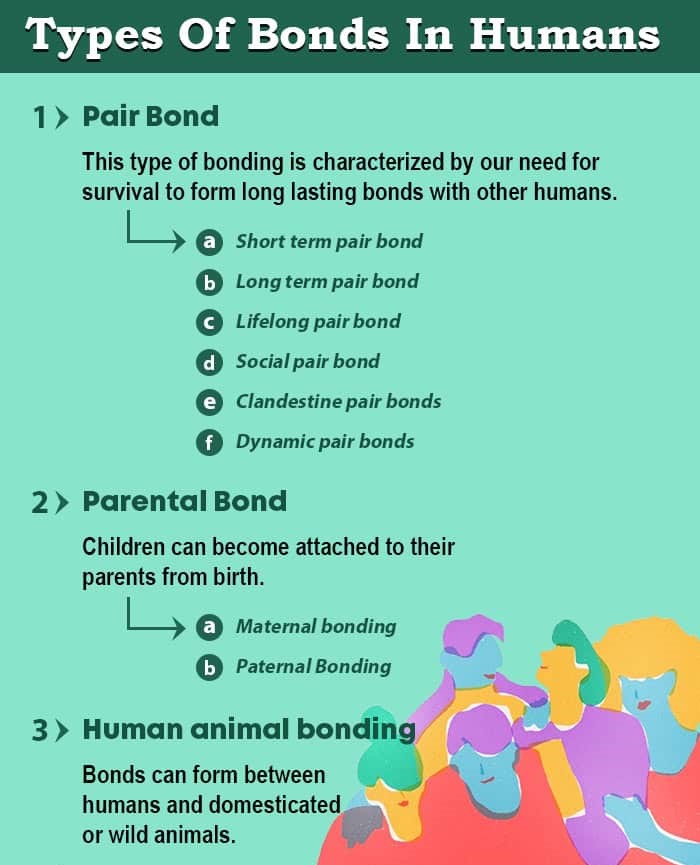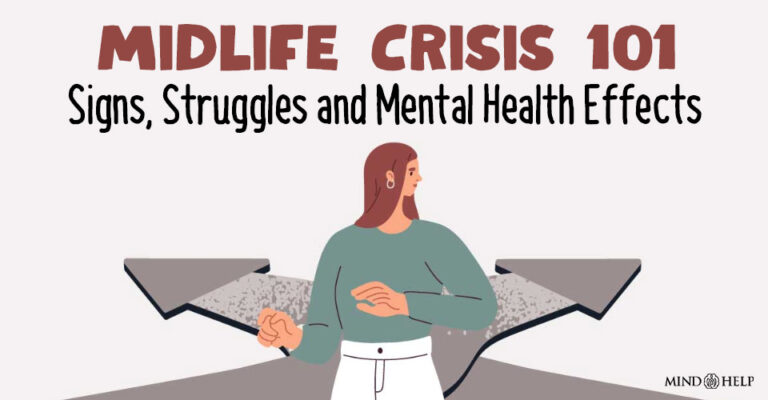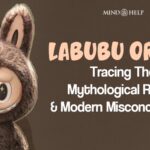Bonding refers to the process of developing close and interpersonal relationships between people. There can be two people who share a bond or there can be more. It usually takes place between spouses, friends and family members and can also develop between people who spend a lot of time together.
What Is Bonding?
Bonding is the process of developing an attachment with other human beings, animals 1 Payne, E., Bennett, P. C., & McGreevy, P. D. (2015). Current perspectives on attachment and bonding in the dog-human dyad. Psychology research and behavior management, 8, 71–79. https://doi.org/10.2147/PRBM.S74972 or even nature 2 Seymour V. (2016). The Human-Nature Relationship and Its Impact on Health: A Critical Review. Frontiers in public health, 4, 260. https://doi.org/10.3389/fpubh.2016.00260 . However, human bond primarily refers to the attachment and close relationship shared between a mother and a child. Research 3 Lieberwirth, C., & Wang, Z. (2014). Social bonding: regulation by neuropeptides. Frontiers in neuroscience, 8, 171. https://doi.org/10.3389/fnins.2014.00171 shows that “Positive, enduring bonds between parents and their children play a significant role for the psychological, physiological, and behavioral functions of both parents and children.”
Influenced by trust and affection, it allows us to form close relationships with others we like or prefer during our childhood, adolescence and adulthood. We can develop a bond with our parents, siblings, children, friends, romantic partners or even strangers. We can also bond with certain social groups like classmates, sports teams, coworkers simply by spending a lot of time with these groups.
It is a complex, yet simple process that involves repetitive interaction and mutual preference. Human bonding enables us to connect with others socially. Developing a healthy and positive bond with someone can lead to the development of a close relationship with a satisfactory chemistry. However, it should be noted that this process is separate from liking someone or being attracted to someone.
Studies 4 Brent, L. J., Chang, S. W., Gariépy, J. F., & Platt, M. L. (2014). The neuroethology of friendship. Annals of the New York Academy of Sciences, 1316(1), 1–17. https://doi.org/10.1111/nyas.12315 have found that human bonding,such as social connections 5 Oullier, O., de Guzman, G. C., Jantzen, K. J., Lagarde, J., & Kelso, J. A. (2008). Social coordination dynamics: measuring human bonding. Social neuroscience, 3(2), 178–192. https://doi.org/10.1080/17470910701563392 and friendships “are so important that disrupting them leads to health problems, and difficulties forming or maintaining friendships attend neuropsychiatric disorders like autism and depression.”
Read More About Postpartum Depression Here
Understanding Bonding
Bonding leads to the development of close relationships or attachment with people. When two or more people share some favorable bonds or chemistry between them, they usually start to develop an affinity for one another. Bonding in humans is an outcome of our years of evolution. The need for other people to survive has been ingrained in us from primaeval times.
We humans are social animals and the presence of another one of our kind gives us pleasure and makes us feel comforted. However, it is not simply pleasure which has pushed us to form bonds with another. Biology 6 Winston, R., & Chicot, R. (2016). The importance of early bonding on the long-term mental health and resilience of children. London journal of primary care, 8(1), 12–14. https://doi.org/10.1080/17571472.2015.1133012 has a huge role to play here. Our life begins in our mother’s uterus, from where the embryo and the developing fetus depend on the mother for survival and lives in a close relationship with her. This gets carried over to the infancy stage when children depend on their caregivers for survival.
“The brain systems that motivate humans to form emotional bonds with others probably first evolved to mobilize the high-quality maternal care necessary for reproductive success in placental mammals,” explains a 2004 study 7 Pedersen C. A. (2004). Biological aspects of social bonding and the roots of human violence. Annals of the New York Academy of Sciences, 1036, 106–127. https://doi.org/10.1196/annals.1330.006 . Researchers 8 Winston, R., & Chicot, R. (2016). The importance of early bonding on the long-term mental health and resilience of children. London journal of primary care, 8(1), 12–14. https://doi.org/10.1080/17571472.2015.1133012 have also observed that lack of love and care from parents can cause severe mental health problems in children and impair the ability to be happy in the long run. Thus, human bonding is deeply rooted in our development and we learn to form secure and close relationships with others, throughout our lives, which can have a lasting impact on it.
Types Of Bonds In Humans

According to a 1988 study, there are three types of bonds which are present in human beings. These are pair bonding, parental bonding and human-animal bonding
1. Pair Bond
This type of bonding is characterized by our need for survival to form long lasting bonds with other humans. It is an evolved trait which is related to our psychological and behavioral aspects. A pair bond can exist between two humans as needed for our social relationships with other humans. This bond can be non-sexual in nature. It is formed through our social interactions with other people and also by liking another individual which can be in terms of physical attributes or personality. Types of pair bonds in humans are:
A. Short term pair bond
This bond exists for a short period of time and is transient in nature. It can occur in individuals who are together for a short period of time before they wither apart.
B. Long term pair bond
This bond exists for a significant portion of both participating individuals’ lives. This type of bond can exist between close friends, spouses or even family members.
C. Lifelong pair bond
Here, both individuals are mated together for life. This type of bond can exist between individuals who are married and grow old together. It can also be seen in people who have known each other all their lives, like close friends and family.
D. Social pair bond
This type of bond exists for social reasons. It can form in a society where a person has bonded with other individuals due to reasons of property, money or even social events, communities and interactions.
E. Clandestine pair bonds
These types of bonds are characterized by having multiple sexual relations with other individuals, for a short period of tim.
F. Dynamic pair bonds
These types of bonds exist between people who usually have sexual relations with more than one mate at a time, which exists for a significant period of time.
2. Parental Bond
Children can become attached to their parents from birth. A study 9 BOWLBY J. (1951). Maternal care and mental health. Bulletin of the World Health Organization, 3(3), 355–533. by psychiatrist John Bowlby gave rise to the popular attachment theory 10 Flaherty, S. C., & Sadler, L. S. (2011). A review of attachment theory in the context of adolescent parenting. Journal of pediatric health care : official publication of National Association of Pediatric Nurse Associates & Practitioners, 25(2), 114–121. https://doi.org/10.1016/j.pedhc.2010.02.005 . It describes the formation of an emotional bond between a child and their primary caregiver. This is because of our tendency to seek protection from someone when we feel vulnerable and also having someone to care and protect us. The study stated that babies have an ingrained need to make emotional attachments with their caregivers as it increases their chances of survival, by providing them with the care they need. Here parental bonding can be broken down into maternal and paternal bonding.
A. Maternal bonding
The bond between a mother and a child can be one of the strongest of all types of bonds present in humans. A 2015 study 11 Swain, J. E., Kim, P., Spicer, J., Ho, S. S., Dayton, C. J., Elmadih, A., & Abel, K. M. (2014). Approaching the biology of human parental attachment: brain imaging, oxytocin and coordinated assessments of mothers and fathers. Brain research, 1580, 78–101. https://doi.org/10.1016/j.brainres.2014.03.007 stated that a mother’s presence for a child provides it with its primary social experience. The mother’s presence is necessary for the infant’s emotional, social and cognitive development, language and communication skills. An infant forms a bond with its mother, right from the embryo, when it is dependent on her for its survival. After birth, breastfeeding and nurturing are other important factors which bind a child towards its mother.
B. Paternal Bonding
This type of bond forms between a father and his children. A study 12 Greene, A. D., Halle, T. G., Le Menestrel, S. M., & Moore, K. A. (2001). Measuring Father Involvement in Young Children’s Lives: Recommendations for a Fatherhood Module for the ECLS-B. National Center for Education Statistics (NCES), a part of the U.S. Department of Education. https://nces.ed.gov/pubs2001/200102.pdf found that fathers influence their children in a significant way and children who had their fathers with them in their childhood tend to perform better on cognitive tests than others. The bond between a father and a child can first form during childbirth, when the father feels a responsibility to take care of his child. He acts as a secondary caregiver and can also take on roles similar to the mother.
3. Human animal bonding
Bonds can form between humans and domesticated or wild animals. A study 13 The importance of the human-animal bond. (2018). The Veterinary record, 183(21), 638–639. https://doi.org/10.1136/vr.k5064 discussed the bonds formed between humans and animals and came to the conclusion that animals, just like humans, can form strong bonds with people. Another 2019 study 14 Menna, L. F., Santaniello, A., Todisco, M., Amato, A., Borrelli, L., Scandurra, C., & Fioretti, A. (2019). The Human-Animal Relationship as the Focus of Animal-Assisted Interventions: A One Health Approach. International journal of environmental research and public health, 16(19), 3660. https://doi.org/10.3390/ijerph16193660 found out that animals can be beneficial in reducing a host of mental, emotional and psychological disorders in individuals. Therapy animals are provided to people with serious mental disorders or who need assistance with their everyday lives.
The study found out that the presence of animals reduced symptoms of anxiety, depression and seizures in people. This can even give rise to a term known as “Emotional Support Animals.” Some animals may help blind individuals in walking and some can even be trained to provide support in case of an emergency. Also, some animals are kept as pets by humans, where the animal, just like an infant, becomes dependent on the human for its protection and survival.
Read More About Animal Behavior Here
Neurobiology Of Bonding
Studies 15 Johnson, Z. V., & Young, L. J. (2015). Neurobiological mechanisms of social attachment and pair bonding. Current opinion in behavioral sciences, 3, 38–44. https://doi.org/10.1016/j.cobeha.2015.01.009 have shown that there are two hormones which are responsible for bonding in humans, which affect both our social and sexual bonding. These are oxytocin and vasopressin. It has been shown that these hormones facilitate bonds that we create with other humans, be it sexual, social or emotional. Oxytocin is responsible for relationship building and love.
Studies have shown that it gets released during labor, breastfeeding and social interactions. Vasopressin on the other hand can lead to formation of trust, dependence and formation of emotional relationships with other humans. A study 16 Carter C. S. (2017). The Oxytocin-Vasopressin Pathway in the Context of Love and Fear. Frontiers in endocrinology, 8, 356. https://doi.org/10.3389/fendo.2017.00356 found out that people who had recently fallen in love had higher levels of vasopressin than others.
Vasopressin is also responsible for causing loving memories and higher levels of alertness and physical sensitivity during passionate moments.
Endorphin 17 Chaudhry SR, Gossman W. Biochemistry, Endorphin. [Updated 2021 Apr 8]. In: StatPearls [Internet]. Treasure Island (FL): StatPearls Publishing; 2021 Jan-. Available from: https://www.ncbi.nlm.nih.gov/books/NBK470306/ is another hormone whose primary function is to act as a natural painkiller for the body. It gets released as our primary response to the touch of another human. It is also characterized by having positive thoughts, which can be one of the main factors in determining the length of relationships that we have.
Importance Of Bonding
Studies 18 Winston, R., & Chicot, R. (2016). The importance of early bonding on the long-term mental health and resilience of children. London journal of primary care, 8(1), 12–14. https://doi.org/10.1080/17571472.2015.1133012 have shown that formation of bonds are essential to our long term mental health. Bonds help us connect, interact and depend on others for our well being. Bonding is essential for our survival and primitive men have been shown to engage in various types of bonding. Studies 19 Dunbar R. I. (2012). Bridging the bonding gap: the transition from primates to humans. Philosophical transactions of the Royal Society of London. Series B, Biological sciences, 367(1597), 1837–1846. https://doi.org/10.1098/rstb.2011.0217 have shown that the transition from primates to humans was possible because of our ingrained need for the presence of others, be it another life form or the same kind of species. Bonding in modern times is necessary for a host of important emotional, mental, psychological and social factors which affect our well being.
- Bonds help us to be more open and social with others.
- It helps us to trust people and also share a symbiotic relationship where both parties benefit from the mutual bond.
- It helps us to develop our emotional and cognitive intelligence.
- Bonds help us to be healthy, both physically and mentally, as it facilitates the release of several important hormones into our body
- Bonds help us to create relationships with others which open new horizons, opportunities and connections in our life, all of which can benefit us at some stage or the other.
Takeaway
Bonding thus is an important factor of human life. It helps us to develop our emotional, social and cognitive abilities and makes us what we are – human.
Bonding At A Glance
- Bonding refers to the process of developing close and interpersonal relationships between people.
- It is the process of developing an attachment with other human beings, animals or even nature.
- Bonding leads to the development of close relationships or attachment with people.
- Bonding in modern times is necessary for various important emotional, mental, psychological and social factors which affect our well being.
- It helps us to develop our emotional, social and cognitive abilities and makes us what we are – human.















